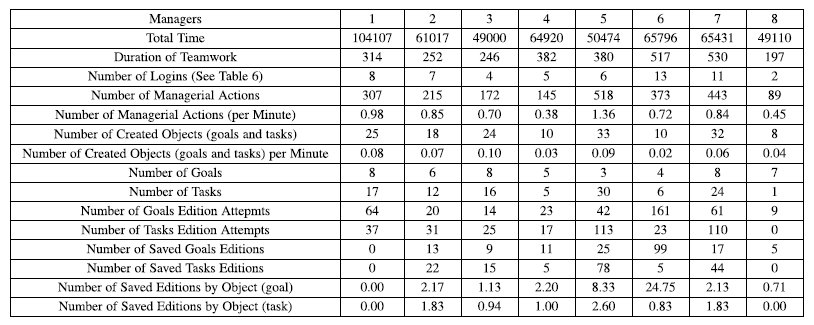As part of a research project I carried out together with researchers from the University of Siegen, Germany, we investigated whether managers are similar enough in terms of their behavior to be able to build a universal team manager. Implicitly: so that you can buy one for yourself in a store! We published the results from our experiments in IEEE TRANSACTIONS ON COMPUTATIONAL SOCIAL SYSTEMS, and I will present some conclusions below.
First, to simplify the analysis, we used data from only two managerial tools with which the participants in our experiments were asked to plan a simple project. These were tools for setting goals and defining tasks to achieve those goals.
Second, the experiment involved 150 volunteers engaged in our research project for 15 months. Most of them were full-time students of business management at the University of Economics in Katowice. They used this platform to manage teamwork. Each group consists of a team manager and several members. For the final analysis, we selected 8 managers who were most active during the experiment.
Third, managerial activities – setting goals and defining tasks – were recorded using online managerial tools on the TransistorsHead.com platform, which you can read more about here:
Fourth, in order to analyze the behavioral patterns of managers and the possibility of building a robotic manager based on these patterns, we used the assumption that humans are serial creatures, meaning that they perform only one activity at a time. This is illustrated by the diagram in Figure 1.

Figure 1. Sequence of managerial activities
What do “Event” and “Thing” mean in Figure 1, read in the section http://olafflak.home.pl/artificialmanagers/category/system-of-organizational-terms-en/
What results did we get?
Despite the apparent similarities between managers in their activity sequences, we found that there are many differences between them. These differences are illustrated by the parameters shown in Figure 2. The surveyed managers differed in the amount of time they worked on the project, the number of goals and tasks set, the number of edits to these goals and tasks, and in many other parameters.

Figure 2. Differences among managers in project work
In summary, despite the similarities in the sequence of activities undertaken by the managers, other parameters (Figure 2) showed that it is impossible to build a universal artificial manager. Rather, in my opinion, we need to go down the road of building an artificial manager as a double of a human manager, unless we have a very large group of managers in one company, managing projects in a similar way… But I will write a separate blog post about this in the coming weeks.
To read about the results of our study you can read here:

